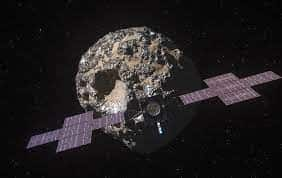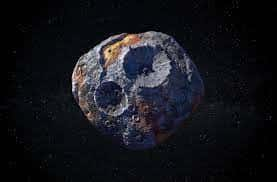Jules Verne, a French author, enthralled readers in the 19th century with the intriguing idea that it was possible to go to the center of the Earth. Scientists have known for a long time that Verne’s fictional expedition was strictly science fiction. People aren’t allowed to go too far under the Earth because of the incredibly high temperatures (the core is about 10,000 degrees Fahrenheit/5,537 degrees Celsius) and crushing pressure (millions of times greater than at the surface).

Space travel is the ideal place to learn about the inside Earth
Nevertheless, a few things concerning the Earth’s interior are understood. For instance, geophysicists learned that the Earth’s core is made up of a solid iron and nickel sphere that spans 20% of its radius and is encased in a shell of molten iron and nickel that extends an additional 15% of its radius.
That and the rest of our knowledge about the interior of our planet were discovered by indirect means, such as through observing the Earth’s magnetic field or the way earthquake waves reflect off different layers under the surface of the planet, reports from space.com.
However, indirect discovery has some drawbacks. How might researchers learn more about the interior of our planet?
I and other planetary scientists believe that space travel is the ideal place to learn about the inside Earth. On October 5, 2023, NASA’s robotic mission to a world made of metal is set to launch. The name of the mission, the spacecraft going there, and the planet it will explore are all Psyche. I’ve also been a member of NASA’s Psyche team for the past six years.
READ ALSO: As the SpaceX Crew-7 zero-g indicator, “Sasha” the sloth sets speed records
Concerning the asteroid Psyche
Discover Magazine stated that asteroids are tiny planets, some of which are the size of small cities while others are comparable to those of small nations. They are the surviving building components from the early, violent stage of planetary formation in our solar system.
About 20% of asteroids are likely formed of metal and have a composition comparable to that of the Earth’s core, despite the fact that the majority are rocky, icy, or a combination of both. So it’s tempting to think that these metallic asteroids are fragments of the interiors of formerly extant planets, torn apart by long-ago cosmic collisions. Perhaps by examining these fragments, researchers will be able to directly learn what a planetary core is like.
The largest known metallic asteroid is called Psyche. Psyche, a major asteroid belt object discovered in 1852, is the breadth of Massachusetts, has a pincushion-like squashed spherical shape, and orbits between Mars and Jupiter. With a backyard telescope, an amateur astronomer can observe Psyche, but it only shows up as a single point of light.
READ ALSO: SpaceX Dragon Achieves Flawless Docking with ISS Amidst Legal Controversy



